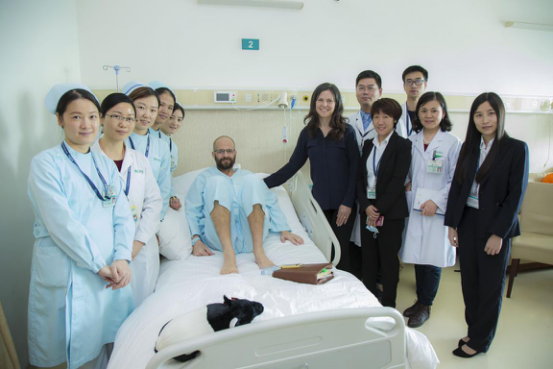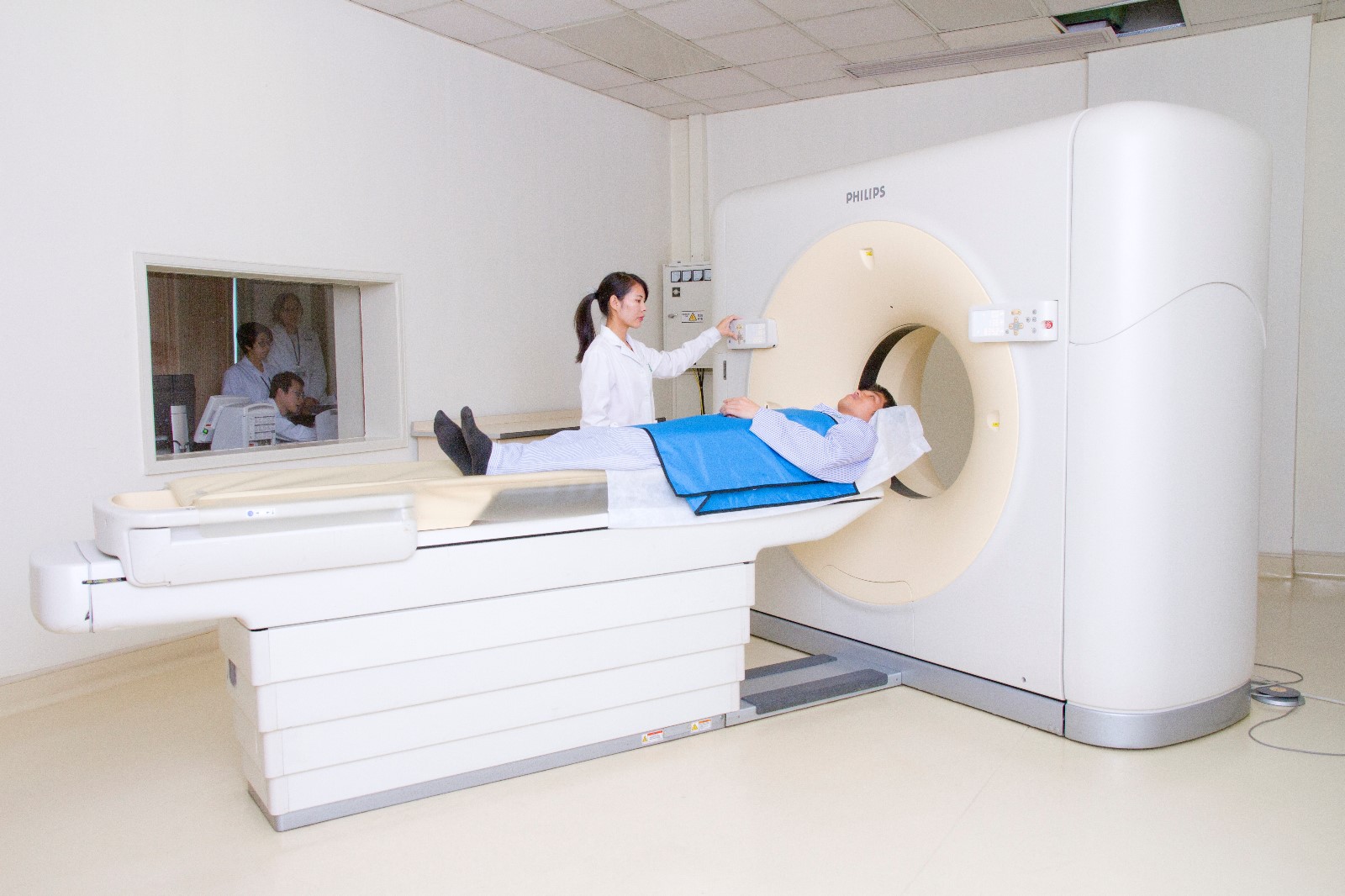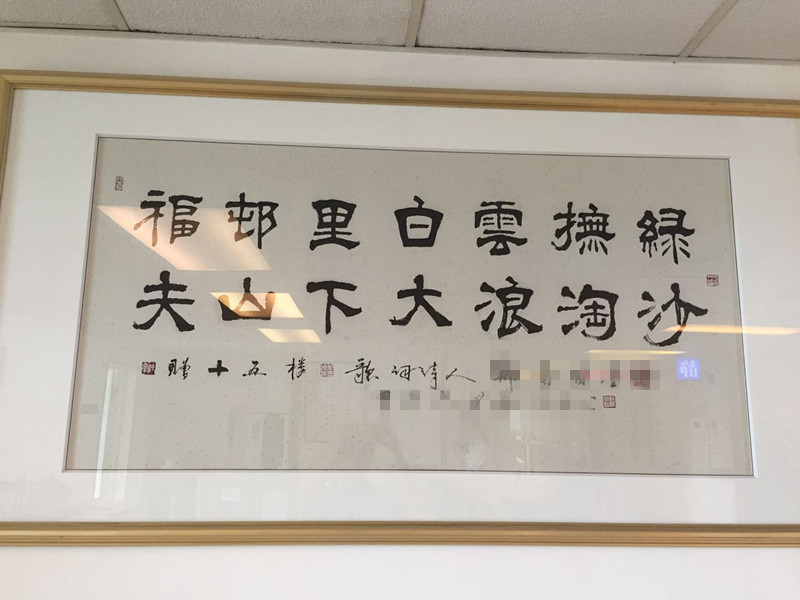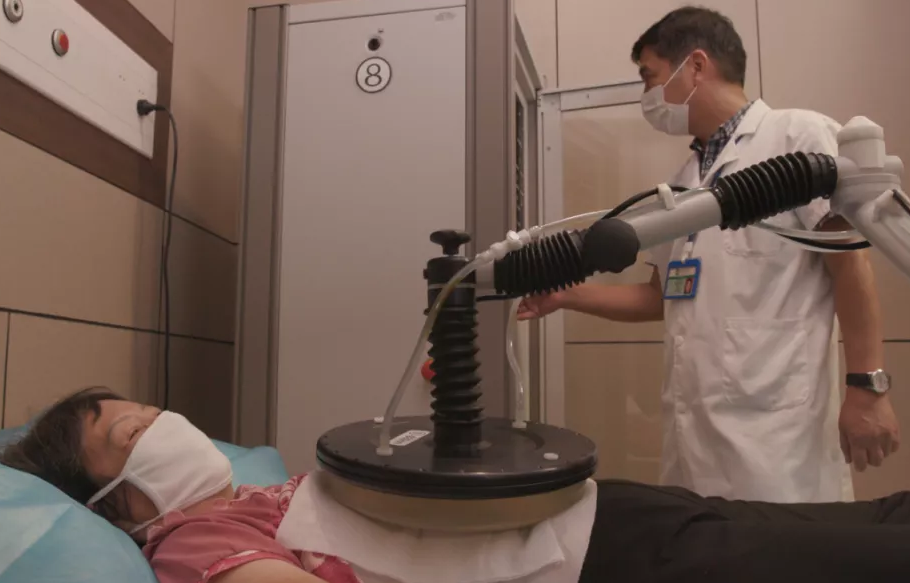“Doc, is it cancer? Can it be cured? I need at least a surgery, don’t I?” It was in April, when 62-year-old Mr. Fu went anxiously to the radiologist Dr. Peng, the director of Radiology Department of Clifford Hospital.
“Please don’t panic. Let me give you comprehensive investigation, and we’ll see what it’s going on.”
This conversation took place after Mr. Fu was diagnosed with a malignant nodule requiring surgical removal in another hospital. He had had an annual physical examination and a nodule was spotted in the posterior segment of the inferior lobe of the left lung.
After reassuring the patient, Dr. Peng arranged for him a thin-slice spiral computed tomography. This state-of-art 256-slice spiral CT scanner is the so-called Carrier of the CT Imaging World. A whole-body scan can detect tiny lesions less than 1 milimeter in diameter within 10 seconds, and is capable of more clearly early detection of small nodules in the lungs. With a closer analysis of the CT images and Mr. Fu’s clinical information, Dr. Peng determined that Mr. Fu contracted TB, and suggested that he should have diagnostic treatment first and return for a reexamination.
“Are you sure? I was told by doctors of several hospitals that it was a malignant nodule,” Mr. Fu could hardly believe his ears. His doubt was quickly removed when another radiologist added, “Dr. Peng’s got a sharp eye. When he says it is TB, then you don’t have to worry about it.” Then, in a recheck one month later, Mr. Fu’s lesion was obviously absorbed and reduced in size. “I was so lucky to get a second opinion before surgery. Dr. Peng’s advice saved me from a surgery.” Mr. Fu was full of gratitude.
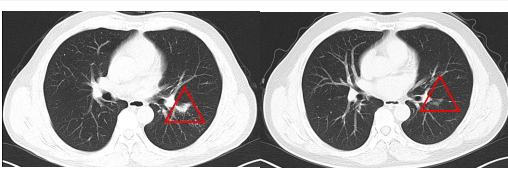
Compared with pretreatment image (Left), the posttreatment lesion (Right) was absorbed and decreased in size
A 55-year-old Ms. Yang had a similar experience. She had a newly developed lung nodule identified in the lingual segment of the left superior lobe during a yearly health checkup, and then visited a couple of specialists for consultation. “I’ve been to a bunch of hospitals, and the specialists reached the same conclusion as malignant pulmonary nodule,” she was obviously terrified by the likely diagnosis of malignancy. When she happened to learn that Dr. Peng was recognized for expertise in the diagnosis of pulmonary nodules, she came to Clifford Hospital apprehensively.
Dr. Peng conducted a comprehensive analysis of her images and concluded that the lesion was not malignant, but more likely inflammatory. He suggested that Ms. Yang should have a short-term anti-inflammatory treatment first. A month later, Ms. Yang came for a reexamination, and found that the lesion in the lingual segment of the left upper lung lobe disappeared. “What a false alarm! I feel like I’m riding a roller-coaster,” recalled Ms. Yang with strong emotions.
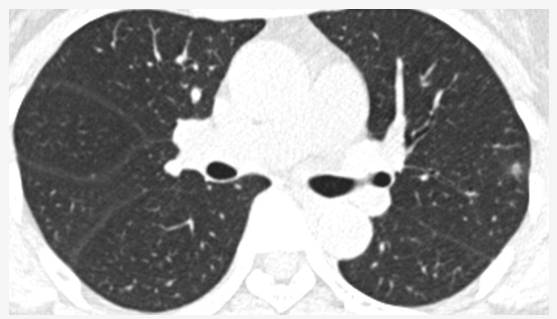
The lesion disappeared in the reexamination
“Lung nodules aren’t equal to lung cancers, so don’t panic when a nodule is identified in the lung,” explained by Dr. Peng. Pulmonary nodules can produce impressions with such characteristics as “same diseases displaying different imaging manifestations while different diseases sharing similar imaging features”, it is thus especially difficult to differentiate benign from malignant nodules. Clifford Hospital is equipped with not only a 256-slice spiral CT scanner, but also a team of professional radiology scouts led by Dr. Peng. The specialist team are perceptive of even the smallest lesion in each image, and deliberate on every parameter of a nodule such as size, edge, and morphology. Only when repeated rechecks are done to ensure preciseness of the impression, will they issue a report.
Dr. Peng reminds that one should not neglect the pulmonary nodules found during a health checkup. In case of such discovery, one should make timely visit to Thoracic Surgery or Respiratory Department. Regular recheck is also recommended after recovery from treatment, so as to prevent relapse.



